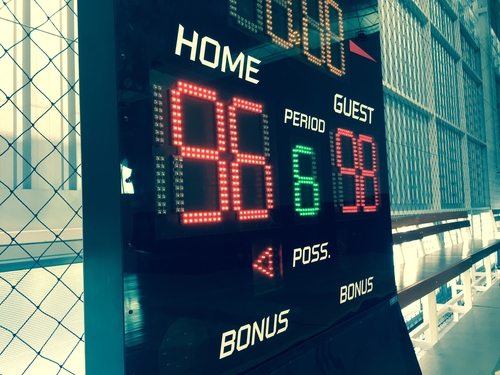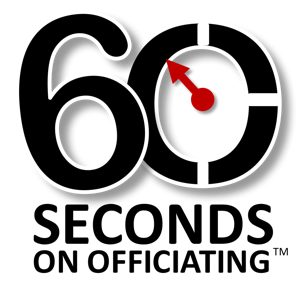
No Time for Time-Outs
Granting a scholastic time-out requires an officiating crew to be aware of ball position, player control and the ball status (live or dead) before honoring that request from players or coaches. But what about some of these stranger time-out request situations?
You’re Not Supposed to Get One
Team A is dribbling the ball and Team B’s coach is requesting a time-out. Of course you should NOT honor this request but by error your partner does stop the clock in response to the coaches request. So now what?
- If the official erroneously GRANTED the time-out, then by rule (5-8-3) the time-out must be administered. Team B is entitled to use the time-out since it was granted. It cannot be revoked and must be charged to Team B, while both teams can enjoy the time-out. Team A will get the ball back to resume play.
- If the official stopped the clock but did NOT GRANT the time-out and recognized the error, BEFORE granting — this would be considered an “inadvertent whistle.” Play would be resumed from the point-of-interruption where team A is in possession of the ball.
Remember … Once a time-out is granted it cannot be revoked.
Granting includes stopping the clock and communicating with the scorer and requesting the timer to start the 60 (or 30) second clock.
Both Teams Request a Time-Out
The ball is dead and you turn toward the scorer’s table and see BOTH (opposing) coaches requesting for a time-out. What should you do? By rule, (5-3-8) a time-out is charged to BOTH teams and these run concurrently (at the same time). This applies if both teams needed to utilize a time-out to keep an injured player (or rectify blood) in the game. If one team only has a 30-second time-out and the other has a 60, then both teams benefit from the full minute time-out.
Player is Airborne Over an Out-Of-Bounds Area
What happens when a player (in control of the ball) is in the air and flying toward the first row of the bleachers? NFHS and NCAA differ in this rule. Scholastic rules permit a player that is in this position (airborne over an out-of-bounds area) and will not land inbounds, to be legally granted a time-out to avoid a violation. Unfortunately NCAA does not permit granting this.
Throw-In that is Inflight
Remember that a PLAYER must be in-control of the ball for them (or their head coach) to be granted a request for time-out. If the ball is in flight officials should ignore the request. If by accident a crew member blew their whistle to stop play, this would be an inadvertent whistle resulting in no time-out granted and resume play at the point of interruption — the original throw in.
Ball on Floor During a Throw-In
If an official places the ball on the floor as part of the resumption of play procedure, the ONLY team that can call time-out is the team permitted to throw-in the ball. The defensive opponent is not permitted to be granted a time-out and that request should be ignored.
No More Left
Team A is well aware they have no time-outs remaining. In fact you overheard the scorer remind the head coach of that situation. Just 15 seconds later after a successful try for goal, the coach requests a time-out. Should you grant that time-out or ignore? By rule, you MUST grant this “excessive” time-out during regulation playing time or any extra period. The penalty is a technical foul with the team offended being awarded two free-throws and the ball for subsequent free-throw at the division line.
I Want More Than One
Successive time-outs (more than one) are permitted throughout regulation of play and should be administered in the order in which they were requested. However, teams may NOT be granted successive time-outs at the expiration of playing time for the 4th quarter or any extra period. While a single time-out is permitted, you should deny the request for a successive time-out.
NFHS Rule Reference
5-11

“… you overheard the scorer remind the head coach of that situation.”
By rule the official must inform the coach of such.
How are others handling the time out request after a made basket before inbounding team gathers ball? When a timeout is requested and there are no more left, in addition to the technical foul, does the requesting team still get to use the timeout, or is T foul shot immediately?
Dave, time-outs should be granted if the opponent requests before the ball is at the disposal of the team entitled to the throw-in. If none are left, you still grant and allow teams to enjoy the time-out, and re-start with a Technical Foul (throws and ball at division line).